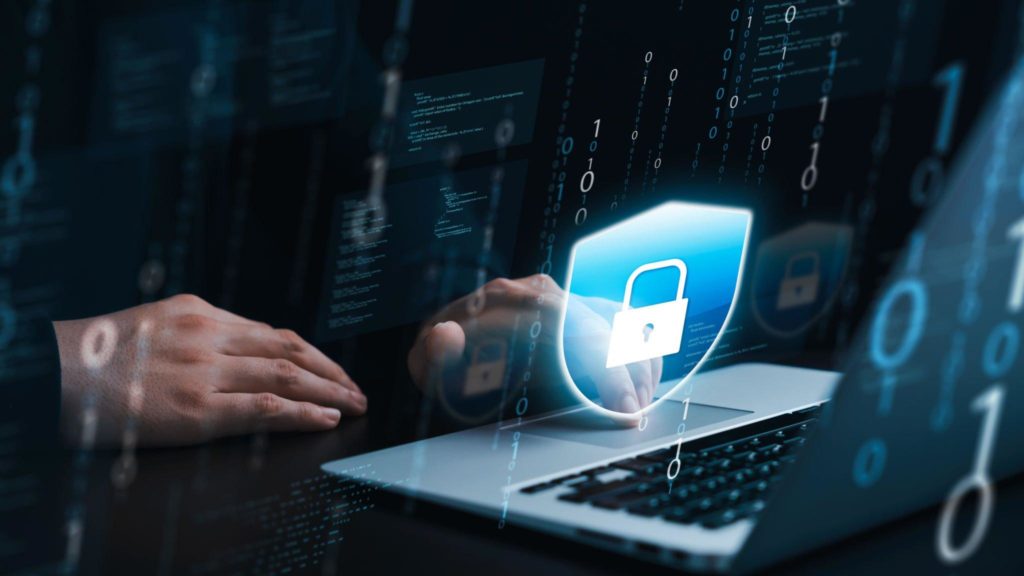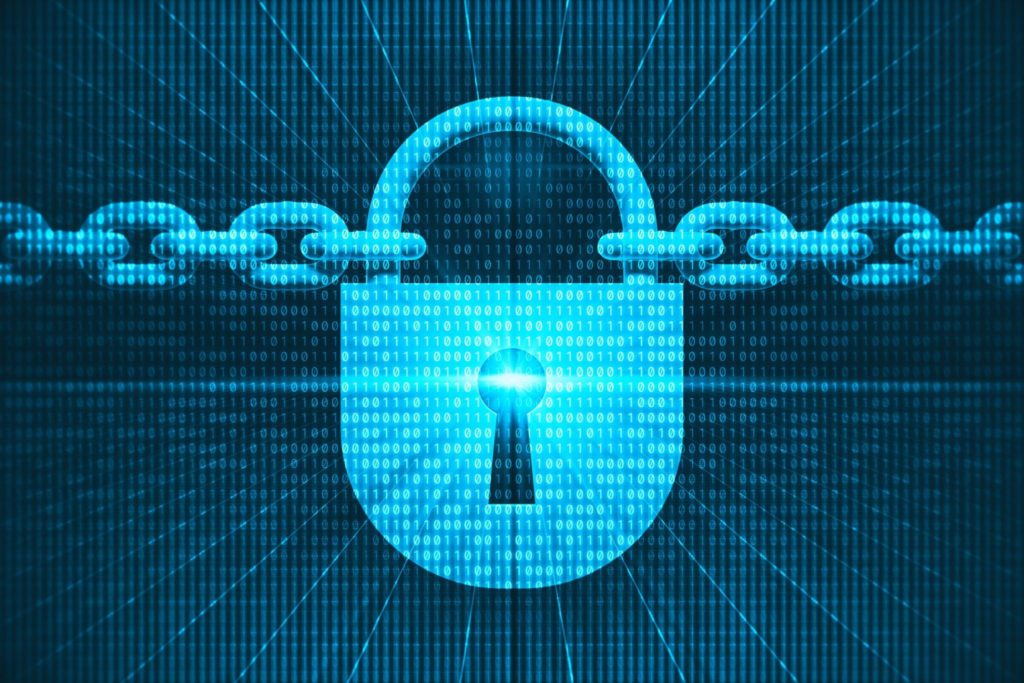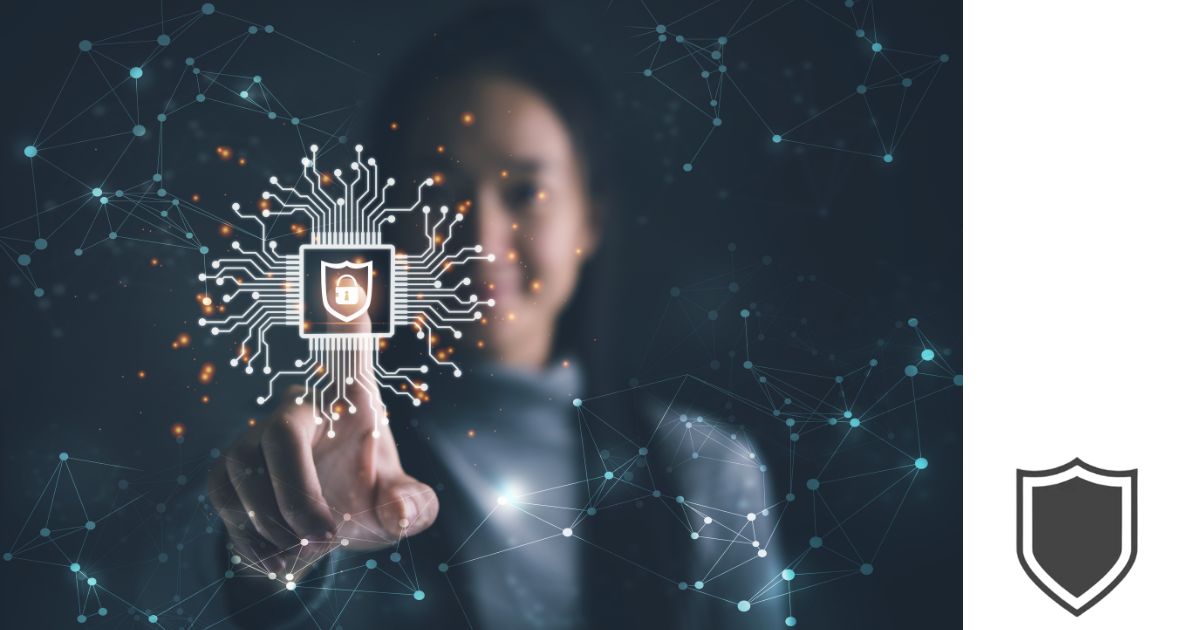In the current digital era, threats to your personal information are both visible and invisible. You spend countless hours on the web, and often it feels like you’re trying to protect your digital identity with inadequate security in the midst of a brutal battlefield.
Have no fear, however, because there’s a potent invisible armor you can now add to your arsenal, and it’s called end-to-end encryption.
But how does this armor work?
In this comprehensive guide, we’re about to explore just how end-to-end encryption works, so get ready to unravel the secrets of this invisible armor, one that will safeguard your private conversations, critical documents, and sensitive emails, ensuring they stay private. Let’s get started…
Table of Contents
End-to-End Encryption Fundamentals
Before we focus on the fundamentals behind the encryption process, it’s important to actually define encryption. Encryption is the process of converting plain text data into an unreadable format using a complex algorithm. This unreadable format is called ciphertext.
Now let’s look at those fundamentals. End-to-end encryption (E2EE) is a critical security measure to ensure that your data remains private and protected from third parties.
To access the original data, it must first be decrypted with the correct decryption key. In end-to-end encrypted systems, the decryption key is only available to the sender and the intended recipient, so both the sender and recipient must have the unique keys to encrypt and decrypt messages.
The system is specifically designed to secure data from the moment it leaves the sender’s device until it arrives at the recipient’s device. This means that even if a cyber attacker intercepts the encrypted data, they cannot decipher its contents without the decryption key.
Here are some key components of E2EE:
- Encryption algorithms: E2EE uses advanced algorithms, such as AES-256 or RSA, to convert data into ciphertext. These algorithms are designed to be mathematically complex, making it extremely difficult for unauthorized parties to decrypt the data.
- Key management: In E2EE systems, each user has a pair of public and private keys. The public key is freely shareable and is used by others to encrypt messages intended for that user. The private key is exclusive to the user and must be kept secure, as it is required to decrypt the messages.
- Perfect Forward Secrecy (PFS): PFS is a feature implemented in some E2EE protocols that ensures each communication session uses a unique encryption key. This way, if a key is compromised, it can only decrypt data from that specific session, not any past or future ones.
Implementing E2EE safeguards your data from potential third-party interception and maintains your privacy in this digital age. By understanding the fundamentals of end-to-end encryption, you can make more informed decisions when choosing communication tools, file storage services, or other applications that handle sensitive data.

Encryption and Privacy
When it comes to protecting your privacy and security, since E2EE encrypts your data, it truly plays a crucial role. It ensures your messages, images, and other sensitive information stay secure from prying eyes, even from the messaging service itself, allowing only you and your intended recipient(s) to read or access it.
Benefits of end-to-end encrypted messaging:
- Privacy protection: E2EE prevents third parties – including hackers, governments, and service providers – from intercepting and reading your messages in transit.
- Increased information security: With only the sender and recipient having the decryption keys, chances of unauthorized access or data breaches are significantly reduced.
- Trust and confidence: Knowing that your messages are protected with E2EE gives you the assurance that your private communication remains private.
End-to-end encryption is widely used in various applications and services, including popular messaging apps like WhatsApp, Signal, and Telegram. By employing end-to-end encryption, these apps ensure that your conversations and shared media are secure. Let’s take a look at some of the most widely-used services.
Applications and Messaging Services
You’ll find apps like Signal, WhatsApp, and Telegram offer E2EE, ensuring that no third party can access the data transmitted between the sender and recipient.
Signal is known for its robust security features and has become the gold standard of secure messaging apps. Besides E2EE, Signal also provides disappearing messages, minimal metadata storage, and open-source code to ensure maximum privacy for its users.
WhatsApp, owned by Facebook, is another popular messaging app leveraging E2EE. Although concerns have risen over Facebook’s involvement in data privacy, WhatsApp still offers solid end-to-end encryption, allowing you to communicate confidentially.
Telegram is a widely-used app known for its large group chat capabilities. While it offers E2EE, keep in mind that it is not enabled by default. To secure your conversations fully, you need to use the “secret chat” feature, which encrypts one-on-one communications.
Apple’s iMessage also uses E2EE, protecting your texts and multimedia messages exchanged between Apple devices. This means that only you and the person you’re communicating with can decrypt and read the messages, preventing unauthorized access.
Finally, while Facebook Messenger offers E2EE, it is not enabled by default. To ensure secure communications, you need to activate the “secret conversation” mode. This way, you can enjoy the privacy benefits similar to WhatsApp and Telegram’s secret chat options.
Using end-to-end encryption in your messaging apps is essential in today’s digital world. By selecting apps that prioritize E2EE, you can protect your communications from prying eyes and maintain your privacy.
Technologies Behind E2EE
Alright, now that we know end-to-end encryption (E2EE) plays a crucial role in keeping your messages and data safe, let’s dive into some of its key aspects.
As we’ve mentioned, when you send a message using E2EE, your message is encrypted on your device before being transmitted. This ensures that even if someone intercepts the message while it’s in transit, they won’t be able to decipher its content. It’s only when the message reaches the intended recipient that it’s decrypted and readable.
To achieve this level of security, E2EE employs various technologies and techniques. Firstly, E2EE relies on client-side scanning, which happens on your device.
This is where the initial encryption happens, ensuring that the data leaves your device in the unreadable ciphertext format. The message remains encrypted as it passes through various servers until it eventually reaches the intended receiver.
E2EE also involves the use of private keys to encrypt and decrypt the data. Both you and the recipient have unique private keys, which are used to scramble and unscramble the data. These keys remain securely stored on your devices, making it nearly impossible for unauthorized parties to access them and, subsequently, your messages.
Now, let’s discuss the role of the receiver in the E2EE process. Once your encrypted message reaches its destination, decryption takes place. This is carried out using the recipient’s private key, which is the only key that can decode the message into a readable format.
This ensures that only the intended recipient can access the content of the message. E2EE operates independently of any servers involved in the communication process. While your encrypted messages might pass through these servers, they remain secure and unreadable throughout the entire journey.
Industry Adoption and Impact
End-to-end encryption is revolutionizing the way you communicate over the internet. It has been widely adopted by a variety of messaging apps to ensure the security and privacy of your conversations.
This implementation not only protects your user data but also limits third-party access to sensitive information. As a business, adopting end-to-end encryption can greatly enhance the security of your online transactions and communications.
This secure line of communication effectively blocks third-party users from accessing transferred data. It means that when sending sensitive company information or financial data, you can rely on the encryption to keep your information secure.
Messaging apps that implement end-to-end encryption provide users with confidence that their conversations cannot be intercepted or accessed by unauthorized parties.
This security measure ensures that only the intended recipient has the correct key to decrypt the message. However, it’s important to be aware that metadata, while not revealing the content of your messages, can still be collected and potentially analyzed by third parties.
Metadata includes information such as the sender and receiver’s identities, timestamps, and message length. This information, while not as sensitive as the content of the messages, could still be valuable to some entities.
Encryption Alternatives and Comparisons
In the world of online security, understanding different encryption methods is crucial for protecting your data. One alternative to end-to-end encryption is encryption-in-transit.
With encryption-in-transit, messages are encrypted on the sender’s end, delivered to the server, decrypted there, then re-encrypted and delivered to the recipient, finally being decrypted on their end.
While this provides a level of protection, it’s not as secure as end-to-end encryption, since messages can be decrypted at the server.
One popular service that uses encryption-in-transit is Gmail, provided by Google. While Google offers a decent amount of security for your emails, it’s not end-to-end encrypted, which means your messages can be accessed and read by Google if necessary.
On the other hand, Apple’s iCloud service uses end-to-end encryption for certain data, like iMessages and FaceTime, offering a higher level of security.
Another alternative for protecting your data is using edge encryption. This method encrypts data before it leaves your device, and it remains encrypted until it arrives at the intended recipient’s device. Though similar to end-to-end encryption, edge encryption can be vulnerable to attacks aimed at the encryption keys.
Comparing these encryption methods:
- End-to-End Encryption: Data encrypted at the source and decrypted only by the intended recipient, providing the highest level of privacy.
- Encryption-In-Transit: Data encrypted between the sender and recipient, but can be decrypted at server, offering a lower level of security than end-to-end encryption.
- Edge Encryption: Data encrypted before leaving your device and decrypted only when arriving at the recipient’s device, also providing a high level of protection, but vulnerable to attacks targeting encryption keys.
It’s essential for you to be aware of these different encryption methods and their advantages and limitations when choosing a service for your data security needs.
Implications on Law and Surveillance
As you get into the world of end-to-end encryption, it’s wise to also understand its implications on law enforcement and surveillance.
Since end-to-end encryption (E2EE) ensures that only the sender and receiver can access the content of a message, this makes it difficult for any third party, including governments and law enforcement agencies, to intercept and decipher the communication.
For activists and journalists, E2EE serves as a vital tool for protecting their privacy and human rights. It safeguards their online conversations from being monitored or intercepted, thereby allowing the free flow of information without fear of retribution or censorship.
In countries where freedom of speech is restricted, the use of end-to-end encrypted messaging apps can help activists and journalists maintain their safety and security while communicating sensitive information.
On the other hand, the same encryption technologies pose challenges for law enforcement agencies. With E2EE in place, they are often unable to access the content of messages and digital communications, even with a lawful warrant.
This has been referred to as the “lawful access” debate. Companies providing end-to-end encrypted services often do not hold encryption keys, which means they cannot unlock or decrypt the messages, even if they would like to assist law enforcement.
This situation creates a delicate balance. As you consider the role of encryption in today’s digital landscape, it’s important to recognize the dual nature of its impact.
On one hand, it provides robust protection for individual privacy and human rights, empowering vulnerable populations such as activists, journalists, and everyday citizens to communicate securely.
On the other hand, it can hinder law enforcement efforts to investigate and prevent criminal activity, raising public safety concerns.
Ultimately, we must all weigh the clear benefits of encryption in protecting privacy and human rights against the potential risks to public safety created by obstructing law enforcement access to communication data.
As the encryption debate continues, aligning these competing interests will require a thoughtful, unbiased analysis of their implications, striking a balance that upholds both privacy and security.

Edge Cases and Concerns
In the world of E2EE, there are certain edge cases and concerns that you should be aware of as well. While this security measure provides a robust shield for your data, it’s important to understand the potential risks and challenges associated with it.
As we just mentioned, one of the primary concerns with end-to-end encryption is its potential to aid criminals in evading detection. When encryption is in place, it becomes difficult for law enforcement agencies to intercept and analyze the communication of criminals or terrorists, which can lead to challenges when it comes to addressing illegal activities.
Identity theft and fraud are other concerns that can arise when end-to-end encryption is misused. If a malicious actor manages to intercept or break into your device, they can potentially use your personal data to impersonate you or commit fraud.
Data breaches are yet another concern associated with end-to-end encryption. If a breach occurs and unauthorized individuals gain access to encrypted data, they may hold your sensitive information hostage and demand payment in exchange for its safe return.
You should always backup your data, so if a data breach does occur, the impact would be minimized.
Also, the ease of communication provided by end-to-end encryption has unfortunately led to the dissemination of child sexual abuse material. This is arguably the most worrisome aspects of the technology, as it allows for the rapid and secure sharing of illicit content while making it challenging for law enforcement to track down and apprehend those responsible.
Despite these concerns, end-to-end encryption remains an important development in data security. Your understanding and ethical use of this technology can help ensure that both your personal information and the wider digital community remain protected.
Opposition and Debates
It’s no surprise that end-to-end encryption has not been without its share of debates and opposition, but especially from the UK government. The UK’s proposed Online Safety Bill has caused concerns among privacy activists, experts, and UK citizens.
This legislation aims to regulate user-generated content online, but it also poses potential risks to the security and privacy provided by end-to-end encryption.
An open letter signed by various organizations expressed their concerns about the bill undermining the privacy and security of digital communication. They believe that the legislation could lead to weakening encryption measures, ultimately making personal information more vulnerable to hackers and other malicious actors.
As someone interested in the topic, you might be wondering why such a secure and privacy-focused technology is facing opposition from governments? The main argument against end-to-end encryption is usually centered around security concerns, particularly regarding crime and terrorism.
Law enforcement agencies often argue that they need access to encrypted data to investigate and prevent various illegal activities. Again, however, these concerns should be balanced against the benefits of end-to-end encryption for user privacy.
Keep in mind that even though end-to-end encryption services can be mistakenly used by criminals, they also protect the communication of millions of law-abiding citizens and ensure the safety of personal and sensitive data.
Being knowledgeable about the ongoing debates around end-to-end encryption will help you understand its implications and make informed decisions about your digital privacy.
Future Developments and Challenges
As the world increasingly embraces end-to-end encryption, new challenges and developments will inevitably emerge. Experts are constantly working on improving encryption technologies to enhance the security of your communication and data transfers.
The growth of end-to-end encrypted messaging tools such as Element and other platforms has empowered individuals and organizations to communicate safely.
Encryption technologies also intersect with artificial intelligence (AI), as AI advancements play a significant role in developing stronger, more efficient cryptography methods. By leveraging AI, future encryption tools will be better equipped to detect and counter threats, ultimately keeping your data even more secure.
Throughout it all, the question of striking a balance between security, privacy, and public safety will likely remain unresolved, creating tension in the debate surrounding E2EE.
As you navigate the evolving landscape of end-to-end encryption, it’s wise to stay informed of future developments and challenges. By understanding the potential benefits of improved encryption tools, as well as the concerns raised by some parties, you can make informed choices about the technologies you rely on for secure communication.
Conclusion
Navigating the digital world might feel like traversing an endless battlefield, but equipped with the understanding of how end-to-end encryption works, you’re now armed with an invisible armor. It’s this armor, E2EE, that transforms your sensitive data into an unbreakable code as it journeys across the internet, keeping it safe from prying eyes.
Remember, knowledge is power, and understanding this crucial technology can be the difference between fortifying your digital life and falling prey to data threats.
At PrivacyDefend.com, we’re committed to helping you navigate this complex landscape and secure your online world. Stay tuned for more insights and information on how to become the ultimate guardian of your digital life.
How End-To-End Encryption Works FAQs
Can end-to-end encryption be hacked?
While no system is entirely invulnerable, end-to-end encryption is designed to be extremely secure. It scrambles data into an unreadable format during transmission, which can only be deciphered using the correct decryption keys. Therefore, even if intercepted, the encrypted data remains unintelligible to the hacker. However, if the decryption keys are stolen or if the device itself is compromised, the data could potentially be accessed.
Can governments see end-to-end encryption?
End-to-end encryption is designed to prevent anyone, including governments, from viewing the content of the communication. Only the sender and the receiver, who hold the necessary decryption keys, can view the message.
This protection remains in place unless a government entity legally compels a service provider to create a backdoor or the user’s device is directly accessed.
Can police read end-to-end encrypted messages?
In most cases, police cannot read end-to-end encrypted messages due to the encryption process, which only allows the sender and recipient to decrypt and read the messages. However, if law enforcement obtains access to either user’s device or decryption keys, they can potentially read the messages.
Can end-to-end encrypted data be subpoenaed?
While a subpoena can compel a person or organization to produce documents or information, the nature of end-to-end encryption means that only the sender and recipient have the keys to decrypt the data.
Typically, service providers themselves do not have access to these keys and as a result cannot provide decrypted information even when subpoenaed. However, if law enforcement legally gains access to the sender or receiver’s device and encryption keys, they can then potentially access the data.
- Amazon Email Phishing: How to Identify and Avoid Scams - May 11, 2025
- Malwarebytes vs McAfee: Decoding the Ultimate Antivirus Battle - May 11, 2025
- Best Antivirus for Windows 10: Expert Recommendations for 2023 - May 11, 2025










4 thoughts on “The Invisible Armor: How End-to-End Encryption Works”